Camino del Norte
- A dramatic, more challenging pilgrim route to Santiago
- San Sebastian, a gastronomic experience fit for any foodies
- The art and architecture of the Guggenheim in Bilbao
- The contrast of quiet fishing villages and modern cities
- Gaining your Compostela in Santiago
Gallery
Itinerary
Day 1 Arrival in San SebastiánWelcome to San Sebastián, the 'Pearl of the Bay of Biscay'! Once you have arrived, why not take a stroll along the famous Playa de la Concha or Playa de la Ondarreta beaches to help you relax and unwind? In the evening, the charming old town awaits with its narrow streets and legendary pintxo bars, where you can sample the diverse flavours of Basque cuisine. If you would like to continue your Camino del Norte pilgrimage, you can start in Irún and hike the first stage to San Sebastián. Feel free to contact us – we will be happy to provide personalised advice.

A modern building located on Pio XII square, created by world famous architect Peña Ganchegui, offering excellent access to all major routes in and out of the city, and within walking distance to all major attractions in town.
From San Sebastián, a short but steep climb takes you out of the city. You will be rewarded with sweeping views and a relaxing hike along unpaved paths and clearly marked trails. Springs along the route provide cool, fresh water. Zarautz, once a tranquil fishing village, was even a favourite holiday destination for the Belgian royal family. Today's destination is Getaria, a charming former fishing and whaling village that has always attracted travellers thanks to its location. Here, you can enjoy fresh fish and a sea view at the end of the day.
Ascent: 643m (2,110ft) / Descent: 584m (1,916ft)
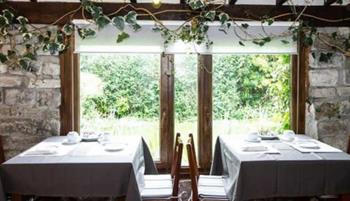
This family-run hotel is located in the old town of Getaria, with nicely decorated rooms. It has a garden where breakfast is served in summer. The views from the accommodation towards the beach are spectacular. The rooms offer TV, telephone, central heating, hairdryer and internet connection.
This stage of the Northern Route starts in the picturesque coastal town of Getaria and follows the stunning Basque coastline. En route, you will pass through the authentic fishing villages of Zumaia and Itziar, which delight visitors with their maritime charm. The varied landscape combines dramatic cliffs with gentle green hills, offering ever-changing views. Your destination for the day is Deba, a historic town boasting a beautiful beach and a rich maritime heritage. It's the perfect place to end the hike with a stroll by the sea.
Ascent: 560m (1,837ft) / Descent: 580m (1,903ft)

Zumardi is a small pension, located in a privileged area, with nine cozy and bright rooms. All rooms have TV, WIFI and private bathroom. The accommodation offers free private parking, terrace and breakfast service.
With every step, you move further away from the sea and deeper into the lush green heart of the Basque Country. The constant inclines and declines make this section one of the most challenging hikes of the entire trip. As you hike, you can look forward to quiet forests, wide meadows and impressive vistas. Once you arrive in Markina-Xemein, be sure to visit the Church of Santa María de la Asunción de Xemein. It is a destination that is well worth the effort.
Ascent: 788m (2,585ft)/ Descent: 714m (2,343ft)
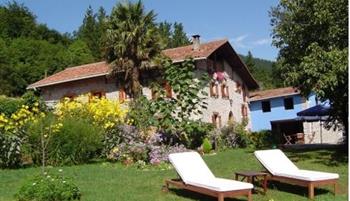
Intxauspe Landetxea is a seventeenth-century Basque farmhouse which was renovated in 2005. It is the ideal place to relax and enjoy the surrounding nature. The property has a dining room, 3 bedrooms each with double bed, private bathroom and TV, and 2 rooms that have twin beds and a shared bathroom.
As you pass through rolling hills and dense forests, you will come to the idyllically situated Zenarruza monastery on the slopes of Monte Oiz. Inside, you will find a small shop where you can take a break and enjoy sweet specialities from the monastery's own bakery. The trail then continues through the lush greenery of the Basque Country to Gernika, a town with a rich history. In 1937, it was almost completely destroyed during the Spanish Civil War, an event which was later immortalised by Pablo Picasso's world-famous work, Guernica. This is a destination that combines culture and nature in a unique way.
Ascent: 728m (2,389ft)/ Descent: 789m (2,589ft)

Located in the center of Gernika, this property has 40 rooms with bathroom, TV, heating, air conditioning, telephone and WIFI. There is a cafeteria, meeting rooms, WIFI and parking.
Following the more challenging stages of recent days, today's route leads you gently and leisurely to Lezama. The quiet route has only a few ascents and descents, inviting you to enjoy the surroundings at a relaxed pace. You can discover the green landscape and small villages along the way at your own pace. Once you arrive in Lezama, you can end the day with a delicious dinner in one of the cosy restaurants. A glass of regional wine is the perfect way to round off a relaxing day.
Ascent: 519m (1,703ft)/ Descent: 472m (1,549ft)

The Hotel Matsa, whose name in Basque mahats means grape, identified the farmhouse in the vineyards surrounding the property, which did txakolí, a type of white wine produced for sale and livelihood of the village during its 400-year history.
After a short hike, you will reach the lively city of Bilbao, where you will have the afternoon free to explore at your leisure. Take a stroll through the streets and experience the blend of traditional and modern architecture. Highlights include the impressive Santiago Cathedral and the world-renowned Guggenheim Museum. However, the city's charming alleys, cafés and markets are also well worth exploring.
Ascent: 326m (1,070ft) / Descent: 380m (1,247ft)

This elegant hotel offers air-conditioned rooms with free Wi-Fi. Each room is spacious, with a minibar and a safe deposit box. The marble bathrooms include a hairdryer and toiletries.
Today is a rest day in Bilbao. Take this opportunity to explore the city at your own pace. Take a stroll through the old town to discover its charming alleys, markets and cafés, or admire the modern architecture around the Guggenheim Museum. A visit to Santiago Cathedral is also worthwhile, as it allows you to experience the city's cultural diversity. It's an ideal day to recharge your batteries and experience the best of Bilbao.

This elegant hotel offers air-conditioned rooms with free Wi-Fi. Each room is spacious, with a minibar and a safe deposit box. The marble bathrooms include a hairdryer and toiletries.
After breakfast, you will leave Bilbao and follow the course of the Nervión River, passing through charming suburbs and alongside lush green riverbanks. This relaxed route offers beautiful views of the water and the surrounding area. As you travel, you can enjoy the blend of urban life and nature. Your destination for the day is Portugalete, a town with a maritime atmosphere and historic charm. You can end the day here with a stroll through the old town or along the waterfront promenade.
Ascent: 464m (1,522ft)/ Descent: 461m (1,513ft)

This magnificent historic building has been completely refurbished whilst still respecting its 19th century façade. It is located at the foot of the impressive Hanging Bridge of Vizcaya. The hotel has a total of 74 rooms which have private bathrooms, minibar, safety deposit box and free WIFI. In addition the accommodation has parking, and a guests can enjoy a meal at the restaurant which serves both modern and traditional Basque fare.
From Pobeña, the Camino del Norte returns to the coast, passing green hills and offering sweeping views of the sea. Following old railway lines that once transported ore from the mines to the ships, the route tells a part of the region's industrial history. Impressive panoramic views of the coast and sea open up again and again along the way. The destination for the day is the charming town of Castro Urdiales, where the harbour and old town are perfect for strolling around. In the evening, you can relax with a walk along the promenade or in one of the cosy restaurants.
Ascent: 472m (1,549ft)/ Descent: 477m (1,565ft)
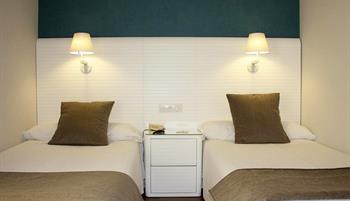
Modern and comfortable beach hotel located near the Beach Promenade and at the foot of Brazomar Beach. The 66 hotel rooms mix classic decor with contemporary facilities, such as music equipment and free WiFi.
Starting in Castro Urdiales, the trail climbs gently along the coast, offering breathtaking views of the Bay of Biscay. After passing through Islares, the route winds its way into the lush green countryside, where rolling hills dominate the landscape. You will be tested by a steep ascent and descent, but you will be rewarded with impressive panoramic views. Finally, you will reach Liendo, the charming village where you will spend the night.
Ascent: 397m (1,303ft) / Descent: 382m (1,253ft)

The house is in a building considered ´artistic heritage´ of the valley. With her fifteenth-century tower attached to a house of s. XII, which include the family coat of arms “Sopeña”. It has 10 spacious double rooms luxuriously furnished, with television, safe, telephone, bathrooms with magnifying mirror, hairdryer and amenities. Besides the reception, buffet breakfast room, game room, reading room, sauna, bar, gym, garage, wifi, private garden and hotel service.
Today's stage mostly runs along the coast, offering fantastic views of white, sandy beaches. After leaving Liendo, you will reach Laredo, a popular summer destination for people from the north of Spain. From El Puntal, you can take a ferry to Santoña and enjoy the scenery at a relaxed pace (approx. €2, payable on site – please check the ferry timetable in advance). En route, you will pass beautiful beaches such as Playa de Berria. Your destination for the day is Noja, where you can finish off with a walk by the sea.
Ascent: 259m (850ft) / Descent: 277m (909ft)
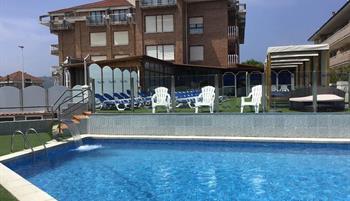
Located right in front of Ris de Noja beach in Cantabria, this accommodation is equipped with a swimming pool, hammocks, and a recreational area to use during your stay.
Today, we will leave the coast behind and head into the peaceful countryside, where the route will wind its way along mostly flat paths through fields and small villages. This gentle stage is perfect for letting your gaze wander and enjoying the rural tranquillity. As you walk, you will be accompanied by green meadows and scattered farms, which are characteristic of this region. Once you arrive in Galizano, you will find a peaceful spot where you can unwind.
Ascent: 237m (778ft) / Descent: 226m (742ft)

Hotel Gastronómico Torre de Galizano is a Renaissance-style building with a contemporary indoor finish. Rooms offer a jacuzzi bath, free WiFi, and air conditioning.
Today's short, mostly flat stage will take you towards Santander, where you can enjoy views of the sea and beautiful sandy beaches. Enjoy the fresh sea air along the way, and if the weather is good, why not dip your feet in the water or even treat yourself to a refreshing swim? In Somo, you can take a ferry to Santander (approx. €3, payable on site) and enjoy the coastal views from the water. The port city welcomes you with a blend of maritime charm and urban sophistication. It's the perfect place to relax in the evening.
Ascent: 91m (299ft) / Descent: 99m (325ft)

This modern hotel opened in 2003. It offers 92 spacious rooms featuring contemporary style furniture. Rooms have a safe, minibar, large desk with optional internet connection, TV and Canal + and individually controlled air conditioning and central heating. The bathrooms are equally spacious and bright, equipped with magnifying mirror, heated towel rail, telephone, background music and amenities designed by Javier Mariscal.
Today, enjoy a relaxing day off in Santander. Take the opportunity to explore the city at your own pace and experience its maritime atmosphere. Take a stroll along the promenade or through the old town, and be sure to visit the city's beautiful beaches. Cultural highlights such as the cathedral and the Centro Botín are also well worth a visit. It's the perfect way to recharge your batteries and enjoy this diverse coastal city at your leisure.

This modern hotel opened in 2003. It offers 92 spacious rooms featuring contemporary style furniture. Rooms have a safe, minibar, large desk with optional internet connection, TV and Canal + and individually controlled air conditioning and central heating. The bathrooms are equally spacious and bright, equipped with magnifying mirror, heated towel rail, telephone, background music and amenities designed by Javier Mariscal.
In the morning, you will be transferred to the Ermita Virgen del Monte chapel, where your hike will begin. From there, the trail winds through picturesque countryside to the medieval town of Santillana del Mar, whose historic appearance has remained virtually intact to this day. Take a stroll through the cobbled streets and admire the charm of the old stone houses. Be sure to visit the 12th-century Collegiate Church of St Juliana, as well as the nearby Altamira Cave, which is famous for its prehistoric paintings. Spend the afternoon discovering the culture and history of this special place at your leisure.
Ascent: 212m (696ft) / Descent: 164m (538ft)
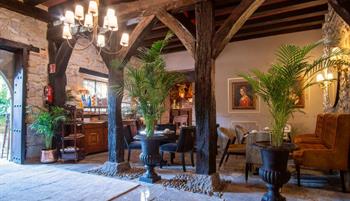
The house is a splendid Gothic building which dates from the 15th century, originally the residence of the first Marquis of Santillana, On crossing the threshold, the you will have the feeling of going back to medieval times but with all modern commodities including lounge with fireplace, library and internet corner, cafeteria and garden. All the rooms are equipped with TV, heating, Hair Drier, Safe, Minibar, Free WIFI and pillow menu.
Gentle hills and small ascents and descents lead you to Comillas, a charming coastal town. The historic centre is well preserved and perfect for strolling around and lingering in. One of the town's highlights is El Capricho, Gaudí's unique little castle, which is definitely worth a visit. The picturesque alleys and squares capture the essence of the region.
Ascent: 482m (1,581ft) / Descent: 540m (1,772ft)

Hotel Comillas provides 30 rooms, equipped with TV, air conditioning, telephone, safety deposit box and private bathroom, and free WiFi. The building is surrounded by a 4000m garden with pool.
Today's stage will take you along quiet, winding paths to the picturesque town of San Vicente de la Barquera, which is situated on a peninsula. From the higher part of the town, you can enjoy impressive views of the inlets and the surrounding mountains. Take a stroll through the charming old town, with its narrow streets and historic buildings. The harbour and waterfront promenade are perfect places to relax and enjoy the fresh sea air.
Ascent: 200m (656ft) / Descent: 210m (689ft)

The accommodation offers 16 rooms located in the upper part of San Vicente with the best views of the area. Despite being in centre of town, the hotel enjoys a quiet environment to enjoy the big terraces and green areas in a familiar and warm atmosphere. Facilities include piped music, television, cafeteria, heating, air conditioning in lounges, and internet in the rooms.
Starting in San Vicente de la Barquera, follow the Camino del Norte along the coast until you cross the border into Asturias at Unquera. As you walk, the beaches become wilder, the cliffs rougher, and the views become even more spectacular. This varied route combines coastal panoramas with lush green landscapes further inland. Your destination is Bustio, a small town with a maritime flair and the perfect gateway to Asturias. Here, you can end the day in a peaceful setting.
Ascent: 239m (784ft) / Descent: 245m (804ft)

El Rincón de Bustio offers 6 tourist apartments, each accommodation up to 4 guests, and 6 double rooms. This tourist complex has a private car park, and restaurant.
Today, you will be accompanied by impressive scenery. To your left are the mighty Picos de Europa, towering above you, and to your right is the rugged coastline of the Cantabrian Sea stretching out before you. The route will take you through varied green landscapes and small villages, along picturesque bays. Time and again, you will be rewarded with magnificent views of the limestone massif and the vast ocean. Your destination today is Llanes, a lively town with a maritime atmosphere.
Ascent: 339m (1,112ft) / Descent: 333m (1,093ft)

The accommodation is located on the beach and close to the city centre. There are 40 rooms with great views of the sea. All are equipped with TV, telephone, mini bar, heater, and safety deposit box. The hotel has a restaurant and a coffee shop, and breakfast is served on the terrace.
The trail winds its way through a charming, hilly coastal landscape. Magnificent views of the sea and the green pastures of Asturias open up again and again. Then it heads inland for a while, passing small, traditionally charming villages. There are cosy places along the way where you can take a break. Finally, you arrive in Ribadesella, a vibrant coastal town boasting a picturesque old town and a spacious beach.
Ascent: 265m (869ft) / Descent: 266m (873ft)

A 3 star new-built hotel ubicated close to the beach, which rooms are provided with private bathroom, TV, minibar, safety deposit and telephone. The accommodation also offers library, heating and cafetería.
Starting in Ribadesella, the route takes you past the lively riverbank and out into the open countryside. The route is characterised by gentle hills, green fields and idyllic villages such as San Pedro, while magnificent views of the sea and cliffs accompany you along the way. Small forests and quiet paths provide opportunities for peace and solitude. This section is particularly varied, combining coastal panoramas with rural idyll. Finally, you arrive in Colunga, a charming village boasting a historic church and a maritime atmosphere.
Ascent: 339m (1,112ft)/ Descent: 311m (1,020ft)

Mar del Sueve is set in a traditional Asturian architecture house combining colonial and modern design in its interior. The rooms feature private bathrooms with hairdryer, minibar, heating, safe deposit, satellite TV and free Wi-Fi. The hotel also provides coffeshop, private garden and elevator.
You will start by passing the historic Iglesia de San Cristóbal, after which the route will take you through small villages and along rural paths lined with lush meadows and fields. Gentle hills, shady forests and magnificent views of the green landscape will accompany you along the way. The route crosses the A-8 motorway several times, charmingly combining nature and modernity. Shortly before Villaviciosa, you will pass through apple orchards, the scent of which fills the air. Finally, you will reach Villaviciosa, home to the impressive Santa María de la Oliva church, which marks the end of the stage.
Ascent: 331m (1,086ft) / Descent: 347m (1,139ft)
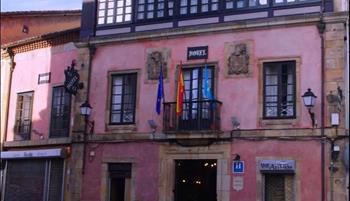
Centrally located Hotel Carlos I is a restored house dating from the 17th century. The rooms are spacious and comfortable, with private bathrooms and TV. In addition, the accommodation has a lounge, library and a cafe.
The trail leads back to the coast via a steep ascent to the Alta de la Cruz viewpoint. En route, you will enjoy impressive views of the sea and the lush green landscapes of Asturias. You will then reach Gijón, the largest city in the region and renowned for its vibrant atmosphere and stunning city beach. The old town and promenade are perfect for a leisurely stroll. Be sure to try a glass of sidra, the region's traditional apple cider.
Ascent: 681m (2,234ft) / Descent: 679m (2,228ft)
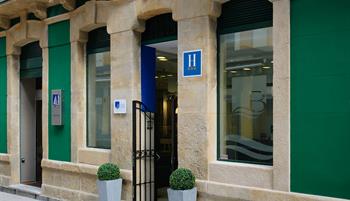
This 3-star modern and comfortable hotel has 35 rooms with air conditioning, satellite TV, telephone, electronic safe, free WIFI and hairdryers. There is a café and private parking (fee payable).
You have a whole day to explore Gijón at your leisure. Take a stroll through the historic district of Cimavilla or along the beach promenade to experience the city's maritime charm. There are numerous cafés, bars and restaurants where you can sample Asturian cuisine and the traditional cider, sidra. If you wish, you can visit museums or the harbour to learn more about the culture and history of Asturias. This rest day offers an opportunity to recharge your batteries for the stages ahead.

This 3-star modern and comfortable hotel has 35 rooms with air conditioning, satellite TV, telephone, electronic safe, free WIFI and hairdryers. There is a café and private parking (fee payable).
Starting in Gijón, the route first takes you into the lush green countryside, passing fields, meadows and small villages. This varied stage is characterised by gentle hills and shady paths before you reach the coast again. Finally, you arrive in Avilés, a city with an industrial past that nevertheless boasts a charming old town and lively squares. The historic old town is perfect for strolling through narrow streets and past magnificent buildings. Here, you can relax and enjoy the city's unique atmosphere.
Ascent: 251m (824ft) / Descent: 233m (764ft)

This charming hotel is located in the heart of the historic and artistic town of Avilés. The hotel has 27 spacious rooms with TV, safe, minibar, telephone and bathroom. In addition the property offers a laundry service, WIFI and there is a café -restaurant, which is a great place to savour the Asturian cuisine.
Today's route takes you through Asturias's varied coastal landscape, with several ascents and descents along the way. You will pass the historic El Castillo castle and the charming El Pito village along the way. There are plenty of opportunities to enjoy magnificent sea and hill views. Your destination today is Cudillero, a picturesque fishing town with colourful houses and a lively waterfront atmosphere. Enjoy the evening strolling through the narrow streets and along the harbour, reflecting on the day's impressions.
Ascent: 570m (1,870ft) / Descent: 572m (1,877ft)
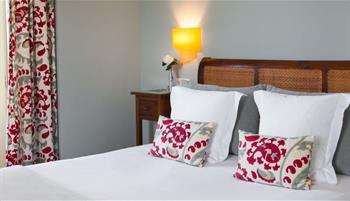
It offers rustic studios with a private terrace, free Wi-Fi and a flat-screen TV, as well as a sofa. The property offers a daily buffet breakfast made from homemade products.
The stage from Cudillero to Santa Marina winds through a picturesque coastal landscape, offering breathtaking views of steep cliffs and sweeping beaches. First, you will pass traditional houses and small villages, then the trail will transition into quieter forests and shady paths. Charming chapels and the Soto de Luíña pilgrim hostel provide welcome rest stops along the way. The varied route is characterised by gentle hills, open fields and the dreamy village of Mumayor. Santa Marina offers a peaceful finale surrounded by green forests and a public park, after which you will be transferred back to Cudillero.
Ascent: 689m (2,261ft) / Descent: 572m (1,877ft)

It offers rustic studios with a private terrace, free Wi-Fi and a flat-screen TV, as well as a sofa. The property offers a daily buffet breakfast made from homemade products.
After transferring to Santa Marina, you will hike through the lush green landscapes of Asturias to the picturesque port town of Luarca. En route, you will pass through villages such as Ballota, Cadavedo and Villademoros, whose peaceful atmosphere and rural idyll will invite you to pause and reflect. You will then cross the Esva River at Canero before continuing through pastures and farms to Barcia. The subsequent descent to Luarca offers spectacular views of the port, the sea and the famous coastal cemetery. This stage culminates in the charming fishing village, which is characterised by its colourful houses and narrow streets.
Ascent: 423m (1,388ft) / Descent: 549m (1,801ft)
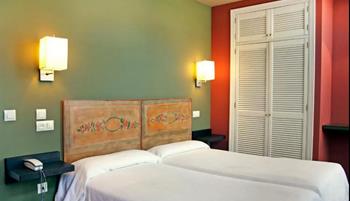
La Colmena Hotel occupies an early 20th century building, and was refurbished in 2002. It offers stylish, comfortable and functional rooms. All rooms are exterior and have private bathrooms, TV and internet.
Starting in the charming fishing village of Luarca, with its white houses and sea views, the trail leads up to old manor houses and quiet country roads. Green meadows dotted with grazing cows and the scent of eucalyptus characterise the route. Small villages, ancient pathways and disused railway lines alternate with tranquil stretches through nature. Despite this variety, silence remains your constant companion. Finally, you reach the lively town of Navia, where you can end the day in the park or on the waterfront promenade.
Ascent: 302m (991ft)/ Descent: 303m (994ft)

Located inside the gardens of the Palacio Arias, you´ll find the ´Hotel-Apartments Arias´, consisting of 42 rooms and 21 fully equipped apartments. The hotel has free WIFI connection, meeting rooms, a restaurant (open only for dinner and breakfast), guest laundry, tennis court and parking.
After transferring to La Caridad, you will begin the final section of your hike in Asturias. As you follow the coast, you will pass through small villages and walk along quiet paths offering sweeping sea views. You will soon reach the bridge over the Ría de Ribadeo, which marks the border with Galicia. With every step, you will experience the unique sensation of transitioning into a new region. Your destination is Ribadeo, a vibrant coastal town and the gateway to the Galician Camino del Norte.
Ascent: 168m (551ft) / Descent: 187m (614ft)
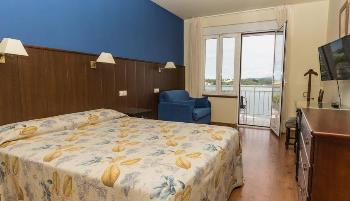
This accommodation offers 27 comfortable rooms with balconies and lovely views to the ´Ria´. Other services include a café, laundry service and parking.
Spend a day relaxing in Ribadeo and explore this charming town at your leisure. Take a stroll through the old town, home to elegant mansions, and enjoy the maritime atmosphere at the harbour. A trip to the famous Cathedral Bay, one of Spain's most impressive beaches, is particularly worthwhile. There are numerous cafés and restaurants where you can sample Galician cuisine. This will help you recharge your batteries before you continue your hike on the Camino del Norte.

This accommodation offers 27 comfortable rooms with balconies and lovely views to the ´Ria´. Other services include a café, laundry service and parking.
From Villamartín Grande, the Camino del Norte leaves the Atlantic coast behind and heads into the green interior. After a steep climb, you will hike through peaceful landscapes, small forests, and fields. Finally, you will reach the village of Villamartín Grande, which is known for its authenticity. As there is hardly any accommodation here, you will be taken back to Ribadeo by transfer (approx. 25 minutes) after the hike. There you will spend another night and can relax and unwind at the end of the day.
Ascent: 585m (1,919ft) / Descent: 297m (974ft)

This accommodation offers 27 comfortable rooms with balconies and lovely views to the ´Ria´. Other services include a café, laundry service and parking.
After breakfast, you will be transferred back to Villamartín Grande in approximately 25 minutes, where you will continue your hike. The trail winds through Galicia's lush green countryside, passing through forests, fields, and small hamlets. You will finally reach Mondoñedo, one of the most historic towns on the Camino del Norte. The town's charming centre, old granite buildings and impressive cathedral are sure to delight. Use the afternoon to enjoy the special atmosphere of this beautiful pilgrimage site.
Ascent: 472m (1,549ft) / Descent: 673m (2,208ft)
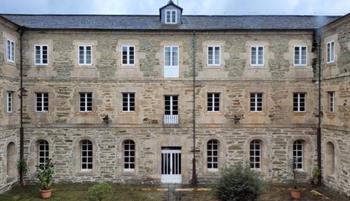
Built in the early 1990s, this property occupies the upper portion of the building of the Royal Seminary Mondoñedo. The accommodation offers rooms with private bathrooms, heating and telephone. It also has a dining room, several conference rooms and ample space for relaxing walks.
Starting in Mondoñedo, home to an impressive cathedral, the route steadily climbs uphill into the green hills of Galicia. Winding through narrow streets and quiet paths, you will arrive in a rural setting of fields, meadows and small villages. Time and again, you will enjoy views of the idyllic Valiñadares Valley, accompanied by the sound of the babbling river. En route, you will pass through charming places such as Lousada, San Xusto and Gontán. Once you arrive in Abadín, a transfer will take you back to Mondoñedo.
Ascent: 566m (1,857ft) / Descent: 191m (627ft)

Built in the early 1990s, this property occupies the upper portion of the building of the Royal Seminary Mondoñedo. The accommodation offers rooms with private bathrooms, heating and telephone. It also has a dining room, several conference rooms and ample space for relaxing walks.
In the morning, you will be transferred back to Abadín, where you will continue your hike. You will follow narrow paths and quiet country roads through forests, meadows and small hamlets, enjoying the most beautiful scenery that rural Galicia has to offer. The route is easy to walk and offers many opportunities to enjoy nature in peace. As you walk, you will discover old stone bridges, small chapels and well-tended front gardens. Finally, you will reach Vilalba, with its historic centre and lively Plaza de Santa María.
Ascent: 154m (505ft) / Descent: 191m (627ft)
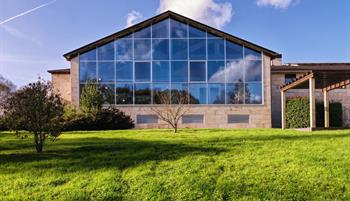
Situated among forests of birch trees and greenery typically of inland of Galicia, this accommodation with 42 spacious and cozy rooms with terrace and everyone fully equipped: bathroom (bath with clamping bar, hair dryer, etc.), TV, air conditioning (warm/cold), free WIFI, safe, minibar, laundry, room-service and wake-up service. Other facilities: restaurant, cafeteria and also spa (gym, massage and massage cabins, gravity and pressure jet, sauna and active pool)
Take a walk along quiet paths, passing traditional houses and green fields, and through small forests. The route crosses several country roads and passes under motorway bridges, yet it never loses its rural tranquillity. You will pass the church of San Juan de Alba and the charming village of Baamonde along the way. After crossing the Parga River, the San Alberte Chapel provides the perfect place to take a break. Finally, shady forest paths will lead you to Seixón de Abaixo, where your transfer to Friol will be waiting.
Ascent: 302m (991ft)/ Descent: 299m (981ft)

The seven double rooms that make up the Casa da Galbana cultural hotel have been designed with the goal of providing you with the best rest.
Located in the central square of Friol and just 20 km from Lugo, the hotel is ideal for those looking to relax in a quiet rural setting, but with all services within reach. In addition, its strategic location, in the geographical centre of Galicia, allows you to visit any point in the community and return to enjoy a comfortable stay.
We also make sure you start your day in the best possible way: with a delicious organic breakfast, prepared with care and using local products.

After a short transfer from Friol, you will begin your hike in the small hamlet of Seixón de Abaixo. You will start by following a quiet country road, before idyllic paths through meadows and sparse forests lead you to Miraz. Here, traditional stone houses and a peaceful way of life will make you want to linger. The route then continues along small roads and dirt tracks through gently rolling countryside, offering sweeping views of green valleys. Shortly before reaching your destination, you will come to the picturesque Lagoa de Sobrado, an oasis of tranquillity surrounded by nature. Finally, you will arrive in Sobrado dos Monxes, where the impressive Cistercian monastery of Santa María provides a fitting conclusion to this stage of the hike.
Ascent: 438m (1,437ft) / Descent: 405m (1,329ft)
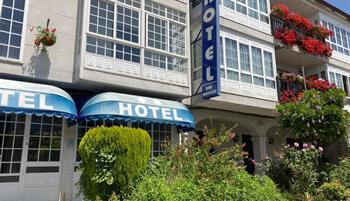
The hotel has 12 double rooms all of them with a bath and television as well as a private garden to unwind after a day on the trail.
Your day begins at the impressive Cistercian monastery in Sobrado before you immerse yourself in the tranquil Galician countryside. Along the way, you will pass small hamlets, dense forests and wide meadows that invite you to pause and reflect. In the village of Boimorto, you will have the opportunity to take a short break. With every step, you will get closer to the lively town of Arzúa, an important meeting place for pilgrims on the Camino Francés. The stage ends in the heart of the town at the church of Santiago de Arzúa, which brings the pilgrim life to life.
Ascent: 203m (666ft) / Descent: 325m (1,066ft)

The Casa Teodora Guesthouse has twenty-eight fully equipped and recently remodeled rooms with careful decoration. Its privileged location on the Camino de Santiago and in the heart of the town allows guests to have the main services and attractions of Arzua. Its family character, warm atmosphere, and welcoming treatment have made Casa Teodora recommended by specialized travel guides from different countries and especially by regular clients for many years.
Starting in the charming old town of Arzúa, the route takes you past mighty oak trees as the landscape gradually transforms into lush green meadows and pastures. Highlights include the medieval altar in Santa Irene, which is dedicated to a Portuguese martyr, and the Baroque fountain with its healing waters. En route, you will pass through several villages whose names are synonymous with the Way of St. James: Brea, Calzada, A Calle and, finally, Rua. Take in the peaceful atmosphere and varied natural surroundings of this stage as you gradually approach your destination.
Ascent: 249m (817ft) / Descent: 362m (1,188ft)

The rural pension has a modern touch that bumps with the natural surrounding in which it is situated. Each room has a different theme and a name which is linked to the Camino de Santiago or to the Galician culture. After your hike you can relax in the Garden of the pension or even enjoy the swimmingpool.
The final section of the Camino de Santiago is an especially emotional highlight of your journey. You will pass through San Paio and Lavacolla, where pilgrims traditionally washed themselves before reaching Santiago. From Monte del Gozo, you will enjoy your first impressive view of the cathedral and the rooftops of the city. Arriving in Santiago de Compostela, a UNESCO World Heritage Site, is an unforgettable, atmospheric experience steeped in history. We recommend staying an extra night to explore the city at your leisure or attend the Pilgrims' Mass. You could also take a trip to Finisterre – please feel free to contact us for more information!
Ascent: 301m (988ft) / Descent: 315m (1,034ft)

A Tafona do Peregrino is located in an emblematic building in the historic centre of Santiago de Compostela. Only 25m from the traditional market, this house retains its natural charm of stone, wood and light, combined with modern materials. There are 14 double rooms, perfectly equipped for an excellent stay in the city. If you are a true foodie, the hotel is home to A Tafona by Lucia Freitas, a Michelin star restaurant.
After a restful night in Santiago de Compostela, your pilgrimage adventure will come to an end today. You may have time for a final stroll through the historic old town or a visit to the cathedral. Then, you will begin your journey home or onwards. If you wish, you can extend your trip with extra days in Galicia to explore the coast and small villages. We would be happy to provide personalised recommendations to ensure you have an unforgettable stay.
This trip has a carbon score of 14kg per person per night, meaning it’s one of our best trips! For comparison, a carbon count of 14kg is equivalent to 7 bottles of champagne. That’s a lot of bubbles!. Here at Macs, we pride ourselves on being a responsible travel company and continue to adopt, develop and innovate ways to positively impact the environment. Find out more information on how we've carbon counted our trips.
Other Information
Is it for me?The Camino del Norte offers a more authentic pilgrim experience than the Camino Frances. Though the walking is considerably tougher the rewards are arguably much greater.
Pilgrimages | For those looking to follow a path of self-discovery. Our Pilgrimage and Camino routes take you on a journey through diverse landscapes and local flavours, while meeting like-minded adventurers along the way.
Inn to Inn Walking | Walk from place-to-place changing accommodations each night. Generally staying in B&Bs, inns, and guesthouses.
Solo Travellers, Families with Teens
The minimum age for this tour is: 12 Years
This walk is graded moderate overall and includes daily walks of between 12 – 33 km per day.
You can expect to walk for between three and eight hours each day and some of it is fairly strenuous walking with ascents of between 100m and 800m, and descents of between 100m and 790m.
The Camino Del Norte follows a mixture of farm/dirt tracks, minor roads and footpaths.
The accommodation in San Sebastian, Bilbao and all larger towns, will be in 3 star hotels, the rest will be a mixture of rural hotels and hostals (a name used to describe small Spanish hotels and guesthouses), all with private rooms and en-suite. They all offer a warm welcome to walkers, traditional hospitality and delicious local food. We do recommend that you book this trip early as the area is always popular and the hotels and inns do fill up early, especially in high season.
Solo Walkers & Single Rooms
The Camino is available to solo walkers at a single supplement.
Meals
A local continental breakfast is included each morning (apart from Bustio), which can sometimes just be coffee, bread and orange juice. Lunch and dinner are not included as standard so you are free to choose from the available options. Every place you stop will have evening meals available, you can get a pilgrims menu for about 10 euros which includes 3 courses, wine and water!
Additional Nights
There is so much to see and do along the route that many of our clients choose to add extra nights along the walk either as a rest day or simply to do some extra sightseeing. If you are walking the route solo try not to add too many extra nights along the way as you will lose touch with those you have met.
The route is marked with yellow painted arrows but please take care at intersections. There are sections on the route where you will divert to follow the red and white stripes of the GR routes. There will always be other walkers around in case you are looking for help. You will be supplied with turn by turn route notes and detailed maps so you will have no problem following the route each day.
In addition to the printed route notes, you will receive in your travel pack, you will also have access to our Macs Adventure App, allowing you to follow the route on richly detailed mapping on your smartphone.
- Accommodation in small rural hotels and hostels with en-suite W/C
- Daily Breakfast
- Baggage Transfers
- Pilgrim Passport and shell
- Camino del Norte Guidebook
- Access to daily route information and GPS tracks via the Macs Adventure Smartphone App
- 24/7 Emergency telephone support
- Return travel to Spain
- Lunches, dinners, snacks or drinks. Breakfast at Bustio
- Travel Insurance
- Personal Equipment
- Taxi transfers or public transport should you need to skip a stage
- Additional nights accommodation along the way.
This trip is available to start on any day from the beginning of March to the end of October.
The best time to walk the Camino depends on your personal preference!
Spring (April to June) is a fantastic choice. Expect pleasant temperatures, blooming landscapes, and fewer crowds than summer. Be prepared for the potential of spring showers.
Summer (July and August) brings sweltering heat to much of Spain, but the northern regions remain refreshingly mild thanks to their coastal climates. If you're a social butterfly, this is your season! The trails are buzzing with fellow pilgrims, creating an unbeatable atmosphere for meeting people, local festivals, and sharing stories.
Autumn (September to early November) is another excellent time to go. You'll enjoy milder temperatures, stunning autumn colors, and quieter trails as the summer crowds dwindle. But, much like spring, there's still a chance of rain—because nature loves keeping us on our toes!
Flying to Bilbao is the best way to get to San Sebastián. Direct flights are available from London Heathrow, Stansted, Bristol and Manchester. From Bilbao, you can easily take the bus along to San Sebastian with ALSA
By Air: If flying to the UK, low-cost airlines such as EasyJet and Ryanair offer direct flights to London Stansted and London Gatwick. For travelling to the rest of Europe or the US, you can fly from Santiago via Madrid with Iberia, via Frankfurt with Lufthansa or via Paris or Barcelona with Vueling. Other options are available and you can check Santiago Airport's website for more information.
By Rail: It is also possible to take the train from Santiago to Madrid (approx 7hrs). Train timetables and fares can be viewed at RENFE.
PLEASE NOTE: Santiago Airport will be closed from 23rd April to 27 May 2026 due to runway renovation works. Other nearby airports include A Coruna and Vigo, and further away you also have Porto and Madrid. During this time bus connections between Santiago and other cities will be reinforced to make onward travel connections easier. Because of this we recommend you plan your travel in plenty of time and we can help should you require any additional private transfers.
At Macs Adventure, we work in partnership with many luggage transfer providers who set a limit on how many bags/suitcases they will transfer per person, and also the weight of the bag/suitcase. Your booking includes transfer of 1 bag per person. It is very important that you read the luggage information specific to your tour before departure. If you do not adhere to these limits, there is a great possibility that you will be charged locally both for extra bags or if they are too heavy. This limitation can be a challenge, especially as airlines generally have limits that are higher. However, our luggage providers have reasons for these limits (usually due to the Health and Safety of their employees), which we must respect.
Baggage transfers are included (max 20kg per person). Your main bag will be transferred each day between your overnight accommodation so that you only need to walk with a day pack. There is a supplement applicable for solo walkers on baggage transfers due to the fact that the transfer costs are usually shared.
Pilgrim Passport & Compostela
Your Pilgrim Passport (Credencial del Peregrino) and scallop shell will be waiting at your first accommodation. The Passport isn’t just practical—it’s a beautiful record of your Camino journey, officially issued by the Church of St. James. Along the route, you'll collect stamps (sellos) from albergues, churches, cafes, and more. Each stamp is a colorful reminder of your journey. To earn your Compostela Certificate in Santiago, you must walk at least the final 100 km, with your stamps serving as proof of this accomplishment.
Please be prepared by packing all necessary items, for example, proper rain gear (jacket and pants), sun hat and sunscreen. Your information pack has a detailed equipment list which includes standard walking/cycling gear such as good walking boots or shoes, warm and waterproof clothes for the cooler months and lightweight clothing for summer, and a day pack.
It is a requirement of booking this tour with Macs Adventure that you have suitable Travel Insurance which covers you for the activity, emergency evacuation and hospital care.
The average daily distance of our Camino tours are between 20 and 25 kilometers and you can expect to walk for between five and eight hours each day and much of it is rather arduous walking. You should do as much walking as possible prior to your walk as this will simply add to your enjoyment. That said if you are not at peak fitness you will find you will soon walk yourself fit.
A mixture of farm/dirt tracks, minor roads and footpaths. The route is marked with yellow painted arrows but please take care at intersections. There are sections on the route where you will divert to follow the red and white stripes of the GR routes. There will always be other walkers around in-case you are looking for help.
We suggest you book as far in advance as possible as the Camino is extremely popular.Numbers can rise by up to 100, 000 people. We will always try and accommodate late bookings but realistically you need to book at least 6 weeks prior to departure.
Yes, some people prefer to walk carrying their own bags as a true pilgrim would have. You can select the option for removing the baggage transfers in Step 2 of the Booking Engine.
Spring (April to June) is a fantastic choice with pleasant temperatures and fewer crowds for a relaxing experience. The northern regions remain refreshingly mild in July and August thanks to their coastal climates, especially in comparison to central and southern Spain. The trails are buzzing with fellow pilgrims during the summer months. Autumn (September to early November) is another excellent time to go, with stunning autumn colors, and quieter trails. During the spring and autumn, it's more likely to experience a shower here or there. There's really no bad time to travel on the Camino.
Public transport and taxis are available, if you are need of support our local partner in Spain will be more that happy to help.
Unfortunately we are unable to change your accommodation bookings and itinerary once you start walking as alternative accommodation is generally not available at such short notice.
Good news! Your Pilgrim Passport (“Credencial del Peregrino”) and shell will be waiting for you at your first accommodation on Day 1. Think of the Pilgrim Passport as a record of your incredible journey along the Camino, issued by the Church of St. James. The Scallop Shell (or "Concha de Vieira") is an iconic symbol of the Camino and is like a badge of honor. You'll see fellow pilgrims proudly displaying theirs on backpacks or hanging them from walking sticks as a sign of their trek to Santiago.
But here’s where it gets fun—you’ll collect stamps (called "sellos") on your Passport at albergues, churches, cafes, and other stops along the route. To receive your Compostela Certificate at the end of your pilgrimage in Santiago, you need to walk at least the final 100km of the Camino. For other sections of the trail, the Passport serves as a stunning keepsake featuring all the colorful stamps you collect along the way.
-
 WalkingAdventure of the Week: Camino de Santiago Final Stage - Sarria to SantiagoRead More3 Min Read03 April 2019
WalkingAdventure of the Week: Camino de Santiago Final Stage - Sarria to SantiagoRead More3 Min Read03 April 2019 -
 Camino23 Essential Camino de Santiago FAQsRead More7 Min Read09 February 2018
Camino23 Essential Camino de Santiago FAQsRead More7 Min Read09 February 2018 -
 Walking4 Foods You'll Eat on the CaminoRead More2 Min Read26 January 2018
Walking4 Foods You'll Eat on the CaminoRead More2 Min Read26 January 2018 -
 CaminoCamino de Santiago Travel GuideRead More4 Min Read11 December 2017
CaminoCamino de Santiago Travel GuideRead More4 Min Read11 December 2017 -
 CaminoEating and Drinking on the Camino Frances - Sarria to SantiagoRead More3 Min Read11 December 2017
CaminoEating and Drinking on the Camino Frances - Sarria to SantiagoRead More3 Min Read11 December 2017 -
 CaminoEssential Phrases for the Camino de SantiagoRead More2 Min Read08 December 2017
CaminoEssential Phrases for the Camino de SantiagoRead More2 Min Read08 December 2017 -
 CaminoEating and Drinking on the Camino de SantiagoRead More4 Min Read08 December 2017
CaminoEating and Drinking on the Camino de SantiagoRead More4 Min Read08 December 2017 -
 WalkingHow fit do I need to be to walk the Camino? Advice & fitness tipsRead More3 Min Read05 December 2017
WalkingHow fit do I need to be to walk the Camino? Advice & fitness tipsRead More3 Min Read05 December 2017 -
 WalkingWhich stage of the Camino de Santiago (Camino Frances) should I walk?Read More7 Min Read05 December 2017
WalkingWhich stage of the Camino de Santiago (Camino Frances) should I walk?Read More7 Min Read05 December 2017 -
 WalkingHow to avoid blisters on a walking holidayRead More3 Min Read06 February 2015
WalkingHow to avoid blisters on a walking holidayRead More3 Min Read06 February 2015 -
 WalkingIs the first day of the French Way Camino the hardest?Read More2 Min Read27 May 2014
WalkingIs the first day of the French Way Camino the hardest?Read More2 Min Read27 May 2014 -
 WalkingCamino Guide Part 3: Which Pilgrimage Route? - Camino FrancesRead More2 Min Read13 February 2014
WalkingCamino Guide Part 3: Which Pilgrimage Route? - Camino FrancesRead More2 Min Read13 February 2014 -
 CaminoCamino Guide 1.2: When to go? Walk or Cycle? Where to Stay?Read More2 Min Read07 February 2014
CaminoCamino Guide 1.2: When to go? Walk or Cycle? Where to Stay?Read More2 Min Read07 February 2014 -
 CaminoWalking the Camino - The first day from St Jean to RoncesvallesRead More2 Min Read20 December 2013
CaminoWalking the Camino - The first day from St Jean to RoncesvallesRead More2 Min Read20 December 2013 -
 WalkingWhat do you need to know about walking from Sarria to SantiagoRead More3 Min Read18 October 2013
WalkingWhat do you need to know about walking from Sarria to SantiagoRead More3 Min Read18 October 2013 -
 How To Avoid The Perils Associated With Ticks?Read More3 Min Read30 August 2019
How To Avoid The Perils Associated With Ticks?Read More3 Min Read30 August 2019 -
 Blessings Along "The Way" - Part 1Read More4 Min Read20 April 2020
Blessings Along "The Way" - Part 1Read More4 Min Read20 April 2020 -
 Blessings Along "The Way" - Part 2Read More4 Min Read22 April 2020
Blessings Along "The Way" - Part 2Read More4 Min Read22 April 2020 -
 Blessings Along "The Way" - Parts 3 & 4Read More3 Min Read28 April 2020
Blessings Along "The Way" - Parts 3 & 4Read More3 Min Read28 April 2020 -
 Blessings Along "The Way" - Part 5Read More3 Min Read01 May 2020
Blessings Along "The Way" - Part 5Read More3 Min Read01 May 2020 -
 Regional wines of the Camino InviernoRead More1 Min Read19 January 2021
Regional wines of the Camino InviernoRead More1 Min Read19 January 2021 -
 Tips & AdviceSantiago de Compostela Cathedral Restoration CompletedRead More1 Min Read26 January 2021
Tips & AdviceSantiago de Compostela Cathedral Restoration CompletedRead More1 Min Read26 January 2021 -
 Which Camino is for me?Read More5 Min Read04 November 2024
Which Camino is for me?Read More5 Min Read04 November 2024 -
 Camino & PilgrimagesWhat is a Pilgrimage?Read More2 Min Read25 May 2023
Camino & PilgrimagesWhat is a Pilgrimage?Read More2 Min Read25 May 2023 -
 CaminoKindness, community and camaraderie on the CaminoRead More1 Min Read27 February 2024
CaminoKindness, community and camaraderie on the CaminoRead More1 Min Read27 February 2024 -
 Camino & PilgrimagesCamino de Santiago Shell Meaning & SymbolismRead More2 Min Read31 January 2025
Camino & PilgrimagesCamino de Santiago Shell Meaning & SymbolismRead More2 Min Read31 January 2025 -
 Camino & PilgrimagesCamino Portuguese Coastal vs Camino Portuguese Central RouteRead More3 Min Read09 April 2025
Camino & PilgrimagesCamino Portuguese Coastal vs Camino Portuguese Central RouteRead More3 Min Read09 April 2025 -
 Camino & PilgrimagesCamino del Norte vs Camino Primitivo: Which is for you?Read More4 Min Read30 September 2025
Camino & PilgrimagesCamino del Norte vs Camino Primitivo: Which is for you?Read More4 Min Read30 September 2025 -
 WalkingInspired by Robson Green’s World’s Most Amazing Walks? Here’s How to Follow in His FootstepsRead More7 Min Read01 December 2025
WalkingInspired by Robson Green’s World’s Most Amazing Walks? Here’s How to Follow in His FootstepsRead More7 Min Read01 December 2025 -
 CaminoWalking the Camino del Norte: My first CaminoRead More3 Min Read22 November 2018
CaminoWalking the Camino del Norte: My first CaminoRead More3 Min Read22 November 2018 -
 Walking9 of the Best Wilderness MoviesRead More4 Min Read11 August 2017
Walking9 of the Best Wilderness MoviesRead More4 Min Read11 August 2017 -
 WalkingTop 20 Inca Trail QuestionsRead More6 Min Read02 April 2019
WalkingTop 20 Inca Trail QuestionsRead More6 Min Read02 April 2019 -
 WalkingHow long does it take to walk the South West Coast Path?Read More2 Min Read04 February 2019
WalkingHow long does it take to walk the South West Coast Path?Read More2 Min Read04 February 2019 -
 WalkingEating and Drinking on the South West Coast PathRead More19 Min Read18 April 2025
WalkingEating and Drinking on the South West Coast PathRead More19 Min Read18 April 2025 -
 WalkingSouth West Coastal Path Walks – Which Section Is for You?Read More8 Min Read15 April 2025
WalkingSouth West Coastal Path Walks – Which Section Is for You?Read More8 Min Read15 April 2025 -
 West Highland WayAdventure of the Week: The West Highland WayRead More4 Min Read09 January 2019
West Highland WayAdventure of the Week: The West Highland WayRead More4 Min Read09 January 2019 -
 WalkingMacs Adventure Top 10 Walking and Cycling Tours of 2019Read More4 Min Read28 December 2018
WalkingMacs Adventure Top 10 Walking and Cycling Tours of 2019Read More4 Min Read28 December 2018 -
 WalkingThe Best Hiking in the Outer HebridesRead More2 Min Read27 December 2018
WalkingThe Best Hiking in the Outer HebridesRead More2 Min Read27 December 2018 -
 Walking5 Insider Tips for Adventuring in NorwayRead More3 Min Read18 October 2018
Walking5 Insider Tips for Adventuring in NorwayRead More3 Min Read18 October 2018 -
 WalkingInca Trail Permits: How do they work, and what if they sell out?Read More2 Min Read26 September 2018
WalkingInca Trail Permits: How do they work, and what if they sell out?Read More2 Min Read26 September 2018 -
 TrekkingThe Ultimate Trekking Year?Read More5 Min Read06 September 2018
TrekkingThe Ultimate Trekking Year?Read More5 Min Read06 September 2018 -
 WalkingAdventure of the Week: Picos de Europa to the CoastRead More3 Min Read25 July 2018
WalkingAdventure of the Week: Picos de Europa to the CoastRead More3 Min Read25 July 2018 -
 Walking14 tips for walking in The SunRead More2 Min Read28 June 2018
Walking14 tips for walking in The SunRead More2 Min Read28 June 2018 -
 Cycling10 benefits of spending time outdoorsRead More2 Min Read14 May 2018
Cycling10 benefits of spending time outdoorsRead More2 Min Read14 May 2018 -
 Walking10 Things to Know About the GR RoutesRead More2 Min Read10 April 2018
Walking10 Things to Know About the GR RoutesRead More2 Min Read10 April 2018 -
 WalkingEating and Drinking on the Hadrian's Wall WalkRead More3 Min Read03 April 2018
WalkingEating and Drinking on the Hadrian's Wall WalkRead More3 Min Read03 April 2018 -
 WalkingHadrian's Wall Walk - Frequently Asked Questions.Read More3 Min Read02 April 2018
WalkingHadrian's Wall Walk - Frequently Asked Questions.Read More3 Min Read02 April 2018 -
 WalkingHow fit should I be for walking Hadrian's Wall Path?Read More3 Min Read02 April 2018
WalkingHow fit should I be for walking Hadrian's Wall Path?Read More3 Min Read02 April 2018 -
 WalkingWhich Itinerary Should I Choose on Hadrian's Wall Path?Read More2 Min Read02 April 2018
WalkingWhich Itinerary Should I Choose on Hadrian's Wall Path?Read More2 Min Read02 April 2018 -
 Walking6 Best historical Sites on Hadrian's Wall WalkRead More2 Min Read02 April 2018
Walking6 Best historical Sites on Hadrian's Wall WalkRead More2 Min Read02 April 2018 -
 WalkingWhat is it like to stay in an Alpine hut?Read More3 Min Read27 March 2018
WalkingWhat is it like to stay in an Alpine hut?Read More3 Min Read27 March 2018 -
 WalkingTravel Guide for Hadrian's Wall PathRead More2 Min Read22 March 2018
WalkingTravel Guide for Hadrian's Wall PathRead More2 Min Read22 March 2018 -
 WalkingWhat to Pack for Walking Hadrian's Wall PathRead More3 Min Read22 March 2018
WalkingWhat to Pack for Walking Hadrian's Wall PathRead More3 Min Read22 March 2018 -
 CyclingLa Joie de Vivre - 7 Ways to Experience FranceRead More1 Min Read20 March 2018
CyclingLa Joie de Vivre - 7 Ways to Experience FranceRead More1 Min Read20 March 2018 -
 WalkingWest Highland Way FAQs: Your Ultimate Guide to Scotland's Favourite Long-Distance TrailRead More4 Min Read21 May 2025
WalkingWest Highland Way FAQs: Your Ultimate Guide to Scotland's Favourite Long-Distance TrailRead More4 Min Read21 May 2025 -
 Walking10 most Frequently Asked Questions about Wainwright's Coast to Coast WalkRead More2 Min Read22 February 2018
Walking10 most Frequently Asked Questions about Wainwright's Coast to Coast WalkRead More2 Min Read22 February 2018 -
 WalkingHow fit should I be for walking the Coast to Coast?Read More4 Min Read22 February 2018
WalkingHow fit should I be for walking the Coast to Coast?Read More4 Min Read22 February 2018 -
 WalkingAdventure of the Week: Rob Roy WayRead More2 Min Read21 February 2018
WalkingAdventure of the Week: Rob Roy WayRead More2 Min Read21 February 2018 -
 Walking10 Frequently Asked Questions About Walking in the CotswoldsRead More3 Min Read16 February 2018
Walking10 Frequently Asked Questions About Walking in the CotswoldsRead More3 Min Read16 February 2018 -
 Tips & AdviceThe Best Chocolate Box Villages in the CotswoldsRead More2 Min Read16 February 2018
Tips & AdviceThe Best Chocolate Box Villages in the CotswoldsRead More2 Min Read16 February 2018 -
 Food & DrinkWhere to Eat in the CotswoldsRead More11 Min Read04 November 2025
Food & DrinkWhere to Eat in the CotswoldsRead More11 Min Read04 November 2025 -
 West Highland WayTravel to the Start of the West Highland Way in MilngavieRead More1 Min Read08 February 2018
West Highland WayTravel to the Start of the West Highland Way in MilngavieRead More1 Min Read08 February 2018 -
 WalkingWhat to Pack for Walking in the CotswoldsRead More3 Min Read08 February 2018
WalkingWhat to Pack for Walking in the CotswoldsRead More3 Min Read08 February 2018 -
 West Highland Way10 Top Tips for Walking the West Highland WayRead More4 Min Read18 May 2025
West Highland Way10 Top Tips for Walking the West Highland WayRead More4 Min Read18 May 2025 -
 Walking20 interesting facts about Mont BlancRead More4 Min Read05 November 2024
Walking20 interesting facts about Mont BlancRead More4 Min Read05 November 2024 -
 WalkingEating and Drinking on the Tour du Mont BlancRead More4 Min Read23 January 2018
WalkingEating and Drinking on the Tour du Mont BlancRead More4 Min Read23 January 2018 -
 WalkingWhich Tour du Mont Blanc Trip is Right For Me?Read More4 Min Read21 January 2018
WalkingWhich Tour du Mont Blanc Trip is Right For Me?Read More4 Min Read21 January 2018 -
 Walking25 Frequently Asked Questions on the Tour du Mont BlancRead More5 Min Read20 January 2018
Walking25 Frequently Asked Questions on the Tour du Mont BlancRead More5 Min Read20 January 2018 -
 WalkingTour du Mont Blanc Travel GuideRead More1 Min Read20 January 2018
WalkingTour du Mont Blanc Travel GuideRead More1 Min Read20 January 2018 -
 WalkingHow fit do I need to be for the Tour du Mont Blanc?Read More4 Min Read20 January 2018
WalkingHow fit do I need to be for the Tour du Mont Blanc?Read More4 Min Read20 January 2018 -
 WalkingWeather Conditions on the Tour du Mont BlancRead More2 Min Read19 January 2018
WalkingWeather Conditions on the Tour du Mont BlancRead More2 Min Read19 January 2018 -
 WalkingHow Many Days to Walk the Coast to Coast?Read More2 Min Read16 January 2018
WalkingHow Many Days to Walk the Coast to Coast?Read More2 Min Read16 January 2018 -
 WalkingRecord-breaking Munro walker completes 9th roundRead More4 Min Read13 November 2017
WalkingRecord-breaking Munro walker completes 9th roundRead More4 Min Read13 November 2017 -
 WalkingAdventure of the Week: Mallorca: Tramuntana TrailsRead More2 Min Read28 September 2017
WalkingAdventure of the Week: Mallorca: Tramuntana TrailsRead More2 Min Read28 September 2017 -
 WalkingTop Tips for Walking in the RainRead More2 Min Read25 September 2017
WalkingTop Tips for Walking in the RainRead More2 Min Read25 September 2017 -
 WalkingThe South Downs and the magnificent Seven Sisters CliffsRead More2 Min Read18 September 2017
WalkingThe South Downs and the magnificent Seven Sisters CliffsRead More2 Min Read18 September 2017 -
 WalkingHow Many Days Do You Need to Walk the West Highland Way?Read More4 Min Read27 May 2025
WalkingHow Many Days Do You Need to Walk the West Highland Way?Read More4 Min Read27 May 2025 -
 WalkingAdventure of the Week: Pembrokeshire Coastal PathRead More2 Min Read30 August 2017
WalkingAdventure of the Week: Pembrokeshire Coastal PathRead More2 Min Read30 August 2017 -
 WalkingWalking in the Yorkshire Dales National ParkRead More3 Min Read04 August 2017
WalkingWalking in the Yorkshire Dales National ParkRead More3 Min Read04 August 2017 -
 Tips & Advice5 Things We Love About YorkshireRead More2 Min Read01 August 2017
Tips & Advice5 Things We Love About YorkshireRead More2 Min Read01 August 2017 -
 WalkingThe Basque Country: 15 interesting things to knowRead More3 Min Read20 July 2017
WalkingThe Basque Country: 15 interesting things to knowRead More3 Min Read20 July 2017 -
 WalkingThree of the best summer walking bootsRead More2 Min Read16 June 2017
WalkingThree of the best summer walking bootsRead More2 Min Read16 June 2017 -
 Walking10 things you might not know about the South West Coast PathRead More2 Min Read28 March 2017
Walking10 things you might not know about the South West Coast PathRead More2 Min Read28 March 2017 -
 CyclingDiscover: Spain’s fabulous feriasRead More2 Min Read23 March 2017
CyclingDiscover: Spain’s fabulous feriasRead More2 Min Read23 March 2017 -
 WalkingMy 4 Must-Go Routes or Regions for Adventure in SpainRead More2 Min Read23 March 2017
WalkingMy 4 Must-Go Routes or Regions for Adventure in SpainRead More2 Min Read23 March 2017 -
 7 Photos that will make you book a flight to Spain!Read More1 Min Read22 March 2017
7 Photos that will make you book a flight to Spain!Read More1 Min Read22 March 2017 -
 WalkingHigh Routes & Historic Sights - Graeme's Great Glen Way DiaryRead More29 Min Read10 January 2017
WalkingHigh Routes & Historic Sights - Graeme's Great Glen Way DiaryRead More29 Min Read10 January 2017 -
 CyclingOur Top 5 Areas of Outstanding Natural BeautyRead More2 Min Read30 December 2016
CyclingOur Top 5 Areas of Outstanding Natural BeautyRead More2 Min Read30 December 2016 -
 9 Reasons to Visit CataloniaRead More2 Min Read24 March 2016
9 Reasons to Visit CataloniaRead More2 Min Read24 March 2016 -
 WalkingWalking Holidays in Catalonia: FAQ'sRead More1 Min Read06 March 2016
WalkingWalking Holidays in Catalonia: FAQ'sRead More1 Min Read06 March 2016 -
 Walking16 things to know about the UK’s trig pointsRead More2 Min Read25 February 2016
Walking16 things to know about the UK’s trig pointsRead More2 Min Read25 February 2016 -
 WalkingWhat to pack for your first walking holidayRead More3 Min Read18 February 2016
WalkingWhat to pack for your first walking holidayRead More3 Min Read18 February 2016 -
 Tips & Advice10 things to know about the Balearic IslandsRead More3 Min Read15 February 2016
Tips & Advice10 things to know about the Balearic IslandsRead More3 Min Read15 February 2016 -
 Walking15 reasons to walk the Pennine WayRead More2 Min Read28 December 2015
Walking15 reasons to walk the Pennine WayRead More2 Min Read28 December 2015 -
 West Highland WaySore Feet: Proud Walkers of the West Highland WayRead More1 Min Read11 November 2015
West Highland WaySore Feet: Proud Walkers of the West Highland WayRead More1 Min Read11 November 2015 -
 TrekkingGetting to the Alta Via- An Adventure in itself!Read More2 Min Read23 October 2015
TrekkingGetting to the Alta Via- An Adventure in itself!Read More2 Min Read23 October 2015 -
 WalkingWhat to pack for the Alta Via 1Read More4 Min Read26 November 2024
WalkingWhat to pack for the Alta Via 1Read More4 Min Read26 November 2024 -
 WalkingWhere to go on your walking holiday in NovemberRead More2 Min Read15 September 2023
WalkingWhere to go on your walking holiday in NovemberRead More2 Min Read15 September 2023 -
 WalkingExploring the Isle of SkyeRead More1 Min Read14 August 2015
WalkingExploring the Isle of SkyeRead More1 Min Read14 August 2015 -
 WalkingKit review: Merrell Allout Blaze Sieve walking sandalsRead More2 Min Read11 June 2015
WalkingKit review: Merrell Allout Blaze Sieve walking sandalsRead More2 Min Read11 June 2015 -
 WalkingShould I buy walking shoes or boots?Read More4 Min Read09 June 2015
WalkingShould I buy walking shoes or boots?Read More4 Min Read09 June 2015 -
 Sally's Wine Blog: Bordeaux vs BurgundyRead More2 Min Read04 June 2015
Sally's Wine Blog: Bordeaux vs BurgundyRead More2 Min Read04 June 2015 -
 CyclingA first look at the New Hebridean WayRead More3 Min Read22 May 2015
CyclingA first look at the New Hebridean WayRead More3 Min Read22 May 2015 -
 Walking500 miles of new walking trails for ScotlandRead More1 Min Read25 March 2015
Walking500 miles of new walking trails for ScotlandRead More1 Min Read25 March 2015 -
 Cycling10 great birdwatching appsRead More3 Min Read11 March 2015
Cycling10 great birdwatching appsRead More3 Min Read11 March 2015 -
 WalkingTop tips for packing light for a walking holidayRead More5 Min Read12 February 2015
WalkingTop tips for packing light for a walking holidayRead More5 Min Read12 February 2015 -
 WalkingMinshuku and Ryokan - Traditional Japanese accommodationsRead More2 Min Read07 August 2014
WalkingMinshuku and Ryokan - Traditional Japanese accommodationsRead More2 Min Read07 August 2014 -
 WalkingWalking in Japan - the Nakasendo or the Kumano Kodo Trail?Read More2 Min Read07 August 2014
WalkingWalking in Japan - the Nakasendo or the Kumano Kodo Trail?Read More2 Min Read07 August 2014 -
 WalkingEee by gum, it's Yorkshire Day!Read More2 Min Read01 August 2014
WalkingEee by gum, it's Yorkshire Day!Read More2 Min Read01 August 2014 -
 WalkingYour Ultimate Guide to Walking the West Highland WayRead More5 Min Read15 July 2025
WalkingYour Ultimate Guide to Walking the West Highland WayRead More5 Min Read15 July 2025 -
 Tips & AdviceHow to Get Rid of Midges Naturally and EffectivelyRead More3 Min Read15 July 2025
Tips & AdviceHow to Get Rid of Midges Naturally and EffectivelyRead More3 Min Read15 July 2025 -
 WalkingThe 5 Best Places to Walk or Hike in JulyRead More2 Min Read13 June 2014
WalkingThe 5 Best Places to Walk or Hike in JulyRead More2 Min Read13 June 2014 -
 CyclingOutdoor access in England and ScotlandRead More4 Min Read05 May 2014
CyclingOutdoor access in England and ScotlandRead More4 Min Read05 May 2014 -
 WalkingGear review: Walking polesRead More3 Min Read06 February 2014
WalkingGear review: Walking polesRead More3 Min Read06 February 2014 -
 WalkingThe Benefits of Walking PolesRead More4 Min Read22 October 2024
WalkingThe Benefits of Walking PolesRead More4 Min Read22 October 2024 -
 WalkingWhat else is there to do?: Pembrokeshire Coast PathRead More4 Min Read17 January 2014
WalkingWhat else is there to do?: Pembrokeshire Coast PathRead More4 Min Read17 January 2014 -
 WalkingFive of the best winter walking bootsRead More2 Min Read05 November 2013
WalkingFive of the best winter walking bootsRead More2 Min Read05 November 2013 -
 WalkingA Great Time in the Great GlenRead More5 Min Read19 July 2013
WalkingA Great Time in the Great GlenRead More5 Min Read19 July 2013 -
 WalkingFive of the best walking socksRead More3 Min Read28 May 2013
WalkingFive of the best walking socksRead More3 Min Read28 May 2013 -
 West Highland WayBest holidays for beginner walkersRead More4 Min Read06 February 2013
West Highland WayBest holidays for beginner walkersRead More4 Min Read06 February 2013 -
 WalkingHow to dress for winter walkingRead More3 Min Read24 December 2012
WalkingHow to dress for winter walkingRead More3 Min Read24 December 2012 -
 WalkingGuide to buying a waterproof jacketRead More5 Min Read23 November 2012
WalkingGuide to buying a waterproof jacketRead More5 Min Read23 November 2012 -
 WalkingWhy autumn is a great time to go walkingRead More2 Min Read16 September 2020
WalkingWhy autumn is a great time to go walkingRead More2 Min Read16 September 2020 -
 CyclingBenefits of baselayers for walkers and cyclistsRead More3 Min Read24 September 2012
CyclingBenefits of baselayers for walkers and cyclistsRead More3 Min Read24 September 2012 -
 WalkingGreat alternatives to the Cotswold Way!Read More2 Min Read22 June 2012
WalkingGreat alternatives to the Cotswold Way!Read More2 Min Read22 June 2012 -
 WalkingHow many days to walk the Cotswold Way?Read More2 Min Read03 January 2012
WalkingHow many days to walk the Cotswold Way?Read More2 Min Read03 January 2012 -
 WalkingWhat to Pack for the Coast to Coast WalkRead More2 Min Read22 October 2011
WalkingWhat to Pack for the Coast to Coast WalkRead More2 Min Read22 October 2011 -
 Walking7 of the best places to stay on Coast to Coast WalkRead More2 Min Read20 October 2011
Walking7 of the best places to stay on Coast to Coast WalkRead More2 Min Read20 October 2011 -
 WalkingTop Tips on Travelling to the Coast to Coast WalkRead More4 Min Read13 October 2011
WalkingTop Tips on Travelling to the Coast to Coast WalkRead More4 Min Read13 October 2011 -
 WalkingHow fit do you need to be to climb Kilimanjaro?Read More2 Min Read15 September 2011
WalkingHow fit do you need to be to climb Kilimanjaro?Read More2 Min Read15 September 2011 -
 WalkingAlternative Walks to the West Highland WayRead More3 Min Read10 February 2011
WalkingAlternative Walks to the West Highland WayRead More3 Min Read10 February 2011 -
 West Highland WayWhat to Pack for the West Highland Way?Read More4 Min Read08 May 2025
West Highland WayWhat to Pack for the West Highland Way?Read More4 Min Read08 May 2025 -
 West Highland WaySkipping a Section on the West Highland WayRead More4 Min Read13 January 2011
West Highland WaySkipping a Section on the West Highland WayRead More4 Min Read13 January 2011 -
 TrekkingKilimanjaro Climb Diary - Summit DayRead More3 Min Read30 January 2010
TrekkingKilimanjaro Climb Diary - Summit DayRead More3 Min Read30 January 2010 -
 WalkingA Safari Less Travelled - ScotlandRead More5 Min Read09 July 2019
WalkingA Safari Less Travelled - ScotlandRead More5 Min Read09 July 2019 -
 WalkingAdventure Of The Week: The Arran Coastal WayRead More3 Min Read10 July 2019
WalkingAdventure Of The Week: The Arran Coastal WayRead More3 Min Read10 July 2019 -
 WalkingAdventure Of The Week: The Alta Via 1Read More2 Min Read17 July 2019
WalkingAdventure Of The Week: The Alta Via 1Read More2 Min Read17 July 2019 -
 West Highland WayOne "Appy" Macs Customer!Read More4 Min Read01 July 2019
West Highland WayOne "Appy" Macs Customer!Read More4 Min Read01 July 2019 -
 WalkingAdventure Of The Week: The West Highland WaheyRead More6 Min Read07 August 2019
WalkingAdventure Of The Week: The West Highland WaheyRead More6 Min Read07 August 2019 -
 Adventure of the Week: Queen Charlotte TrackRead More2 Min Read24 July 2019
Adventure of the Week: Queen Charlotte TrackRead More2 Min Read24 July 2019 -
 TrekkingA Safari Less Travelled - England's South West CoastRead More7 Min Read05 August 2019
TrekkingA Safari Less Travelled - England's South West CoastRead More7 Min Read05 August 2019 -
 Walking40 Miles In One Day For Glasgow Children's HospitalRead More3 Min Read26 July 2019
Walking40 Miles In One Day For Glasgow Children's HospitalRead More3 Min Read26 July 2019 -
 Adventure of the Week: Great Glen EscapeRead More1 Min Read31 July 2019
Adventure of the Week: Great Glen EscapeRead More1 Min Read31 July 2019 -
 WalkingAdventure of the Week: Nakasendo Trail, Tokyo, Kyoto, Mount Koya & NaraRead More4 Min Read14 August 2019
WalkingAdventure of the Week: Nakasendo Trail, Tokyo, Kyoto, Mount Koya & NaraRead More4 Min Read14 August 2019 -
 Hiking in Style - You're Worth it!Read More3 Min Read26 August 2019
Hiking in Style - You're Worth it!Read More3 Min Read26 August 2019 -
 WalkingThe Safari Less Travelled – A Rare Find?Read More6 Min Read09 September 2019
WalkingThe Safari Less Travelled – A Rare Find?Read More6 Min Read09 September 2019 -
 WalkingGreat Glen Escape - Monster Hunting on FootRead More4 Min Read16 September 2019
WalkingGreat Glen Escape - Monster Hunting on FootRead More4 Min Read16 September 2019 -
 Adventure of The Week: Bavarian Alps: Hiking the Salt TrailRead More3 Min Read04 September 2019
Adventure of The Week: Bavarian Alps: Hiking the Salt TrailRead More3 Min Read04 September 2019 -
 Active Travel in Portugal - Where Should I Go?Read More3 Min Read10 January 2020
Active Travel in Portugal - Where Should I Go?Read More3 Min Read10 January 2020 -
 WalkingHidden Gems - The Town of Three LiesRead More3 Min Read06 February 2020
WalkingHidden Gems - The Town of Three LiesRead More3 Min Read06 February 2020 -
 WalkingSao Miguel: Azores Green Island - Europe's Best Kept Secret?Read More3 Min Read12 February 2020
WalkingSao Miguel: Azores Green Island - Europe's Best Kept Secret?Read More3 Min Read12 February 2020 -
 WalkingSeven Reasons to Visit the Basque CountryRead More3 Min Read27 February 2020
WalkingSeven Reasons to Visit the Basque CountryRead More3 Min Read27 February 2020 -
 WalkingEverything You Need to Know About Walking The Rota VicentinaRead More4 Min Read05 March 2020
WalkingEverything You Need to Know About Walking The Rota VicentinaRead More4 Min Read05 March 2020 -
 WalkingHistorical Highlights of the Northumberland Coastal PathRead More2 Min Read26 June 2020
WalkingHistorical Highlights of the Northumberland Coastal PathRead More2 Min Read26 June 2020 -
 WalkingTop Reasons to Walk the Northumberland Coastal PathRead More2 Min Read19 August 2020
WalkingTop Reasons to Walk the Northumberland Coastal PathRead More2 Min Read19 August 2020 -
 WalkingFrequently Asked Questions about walking the Northumberland CoastRead More2 Min Read19 August 2020
WalkingFrequently Asked Questions about walking the Northumberland CoastRead More2 Min Read19 August 2020 -
 Tips & AdviceTop Experiences Along the Cleveland WayRead More5 Min Read23 July 2024
Tips & AdviceTop Experiences Along the Cleveland WayRead More5 Min Read23 July 2024 -
 Walking4 Reasons to Walk the Pembrokeshire Coast PathRead More2 Min Read25 September 2020
Walking4 Reasons to Walk the Pembrokeshire Coast PathRead More2 Min Read25 September 2020 -
 How Difficult is the Pembrokeshire Coast Path?Read More2 Min Read25 September 2020
How Difficult is the Pembrokeshire Coast Path?Read More2 Min Read25 September 2020 -
 Famous Welsh WritersRead More2 Min Read15 October 2020
Famous Welsh WritersRead More2 Min Read15 October 2020 -
 WalkingTop 5 highlights from the Great Ocean WalkRead More3 Min Read09 February 2021
WalkingTop 5 highlights from the Great Ocean WalkRead More3 Min Read09 February 2021 -
 The Ultimate Walking Boots Guide for BeginnersRead More7 Min Read10 November 2021
The Ultimate Walking Boots Guide for BeginnersRead More7 Min Read10 November 2021 -
 Tips & AdviceEssential Phrases for SpainRead More1 Min Read17 January 2022
Tips & AdviceEssential Phrases for SpainRead More1 Min Read17 January 2022 -
 WalkingWhich part of Spain is right for me?Read More2 Min Read18 January 2022
WalkingWhich part of Spain is right for me?Read More2 Min Read18 January 2022 -
 Walking5 reasons I loved the Sierra de Aracena!Read More1 Min Read18 January 2022
Walking5 reasons I loved the Sierra de Aracena!Read More1 Min Read18 January 2022 -
 5 Must-See Salvador Dalí sites in CataloniaRead More1 Min Read26 January 2022
5 Must-See Salvador Dalí sites in CataloniaRead More1 Min Read26 January 2022 -
 Tips & Advice10 dishes you have to try in Andalucia!Read More1 Min Read14 February 2022
Tips & Advice10 dishes you have to try in Andalucia!Read More1 Min Read14 February 2022 -
 8 Postcards from the Pueblos Blancos!Read More0 Min Read15 February 2022
8 Postcards from the Pueblos Blancos!Read More0 Min Read15 February 2022 -
 Top 8 Beaches of the Balearic IslandsRead More1 Min Read22 February 2022
Top 8 Beaches of the Balearic IslandsRead More1 Min Read22 February 2022 -
 Balearic Islands 101: A Guide to MenorcaRead More3 Min Read01 March 2022
Balearic Islands 101: A Guide to MenorcaRead More3 Min Read01 March 2022 -
 Tips & AdviceWalk Your Way to WellnessRead More3 Min Read28 December 2023
Tips & AdviceWalk Your Way to WellnessRead More3 Min Read28 December 2023 -
 Meeting the people behind the scenery - Minna & Classic RoutesRead More2 Min Read01 February 2023
Meeting the people behind the scenery - Minna & Classic RoutesRead More2 Min Read01 February 2023 -
 Walking6 reasons to visit West SwedenRead More3 Min Read02 February 2023
Walking6 reasons to visit West SwedenRead More3 Min Read02 February 2023 -
 Tips & AdviceMacs Adventure App Features to Transform Your Next TripRead More3 Min Read10 June 2024
Tips & AdviceMacs Adventure App Features to Transform Your Next TripRead More3 Min Read10 June 2024 -
 WalkingMacs Adventure Trip Types DefinedRead More3 Min Read28 October 2024
WalkingMacs Adventure Trip Types DefinedRead More3 Min Read28 October 2024 -
 The Best Walking Boots for WomenRead More3 Min Read01 October 2024
The Best Walking Boots for WomenRead More3 Min Read01 October 2024 -
 Best Hikes in EuropeRead More6 Min Read02 October 2024
Best Hikes in EuropeRead More6 Min Read02 October 2024 -
 What to Pack for a Self-Guided Walking Trip with Macs AdventureRead More4 Min Read03 October 2024
What to Pack for a Self-Guided Walking Trip with Macs AdventureRead More4 Min Read03 October 2024 -
 The Best Time to Visit IrelandRead More5 Min Read07 October 2024
The Best Time to Visit IrelandRead More5 Min Read07 October 2024 -
 Guide to Walking in ItalyRead More4 Min Read08 October 2024
Guide to Walking in ItalyRead More4 Min Read08 October 2024 -
 Best Walking Holidays in ItalyRead More7 Min Read09 October 2024
Best Walking Holidays in ItalyRead More7 Min Read09 October 2024 -
 Italy Travel Tips: Everything You Need To KnowRead More3 Min Read10 October 2024
Italy Travel Tips: Everything You Need To KnowRead More3 Min Read10 October 2024 -
 Navigating the Italian Food SceneRead More7 Min Read14 October 2024
Navigating the Italian Food SceneRead More7 Min Read14 October 2024 -
 Tips for Travelling To and Around ItalyRead More8 Min Read15 October 2024
Tips for Travelling To and Around ItalyRead More8 Min Read15 October 2024 -
 WalkingGuide to Walking Cinque TerreRead More4 Min Read16 October 2024
WalkingGuide to Walking Cinque TerreRead More4 Min Read16 October 2024 -
 Food & DrinkBest Restaurants in Cinque TerreRead More4 Min Read16 October 2024
Food & DrinkBest Restaurants in Cinque TerreRead More4 Min Read16 October 2024 -
 ItalyThe Best Things to Do in TuscanyRead More4 Min Read21 October 2024
ItalyThe Best Things to Do in TuscanyRead More4 Min Read21 October 2024 -
 Tips & AdviceCinque Terre vs Amalfi CoastRead More4 Min Read22 October 2024
Tips & AdviceCinque Terre vs Amalfi CoastRead More4 Min Read22 October 2024 -
 Tips & AdviceUltimate Guide to Walking the Amalfi CoastRead More6 Min Read23 October 2024
Tips & AdviceUltimate Guide to Walking the Amalfi CoastRead More6 Min Read23 October 2024 -
 Tips & AdviceFood and Drink on the Amalfi CoastRead More3 Min Read24 October 2024
Tips & AdviceFood and Drink on the Amalfi CoastRead More3 Min Read24 October 2024 -
 Tips & AdviceThe Best Things to Do on the Amalfi CoastRead More7 Min Read25 October 2024
Tips & AdviceThe Best Things to Do on the Amalfi CoastRead More7 Min Read25 October 2024 -
 ItalyThe Best Hikes in the DolomitesRead More8 Min Read13 November 2024
ItalyThe Best Hikes in the DolomitesRead More8 Min Read13 November 2024 -
 WalkingThe Ultimate Guide to Hiking the DolomitesRead More5 Min Read21 November 2024
WalkingThe Ultimate Guide to Hiking the DolomitesRead More5 Min Read21 November 2024 -
 Food & DrinkThe Best Food and Drink in TuscanyRead More13 Min Read27 November 2024
Food & DrinkThe Best Food and Drink in TuscanyRead More13 Min Read27 November 2024 -
 WalkingWest Highland Way vs The Great Glen Way - Walking Holidays in ScotlandRead More4 Min Read28 November 2024
WalkingWest Highland Way vs The Great Glen Way - Walking Holidays in ScotlandRead More4 Min Read28 November 2024 -
 WalkingPaula's Walking & Wellbeing JourneyRead More4 Min Read14 January 2025
WalkingPaula's Walking & Wellbeing JourneyRead More4 Min Read14 January 2025 -
 WalkingTrending Walking Destinations for 2025Read More6 Min Read27 December 2024
WalkingTrending Walking Destinations for 2025Read More6 Min Read27 December 2024 -
 WalkingThe Year in Review: 2024’s Most Popular Walking DestinationsRead More5 Min Read30 December 2024
WalkingThe Year in Review: 2024’s Most Popular Walking DestinationsRead More5 Min Read30 December 2024 -
 Best Things to do in Loch NessRead More6 Min Read09 January 2025
Best Things to do in Loch NessRead More6 Min Read09 January 2025 -
 WalkingFuel Your Adventure: The Ultimate Guide to Nutrition on Walking TrailsRead More3 Min Read27 January 2025
WalkingFuel Your Adventure: The Ultimate Guide to Nutrition on Walking TrailsRead More3 Min Read27 January 2025 -
 WalkingVicki's Walking & Wellbeing JourneyRead More3 Min Read11 February 2025
WalkingVicki's Walking & Wellbeing JourneyRead More3 Min Read11 February 2025 -
 Sustainable TravelWhat Is Forest Bathing? A Beginner's Guide to Shinrin-YokuRead More6 Min Read23 February 2025
Sustainable TravelWhat Is Forest Bathing? A Beginner's Guide to Shinrin-YokuRead More6 Min Read23 February 2025 -
 Sustainable TravelIsabelle's Walking & Wellbeing JourneyRead More1 Min Read03 March 2025
Sustainable TravelIsabelle's Walking & Wellbeing JourneyRead More1 Min Read03 March 2025 -
 Sustainable TravelA Guide to Travelling to and Around EnglandRead More5 Min Read10 April 2025
Sustainable TravelA Guide to Travelling to and Around EnglandRead More5 Min Read10 April 2025 -
 Sustainable TravelMike’s Walking & Wellbeing StoryRead More2 Min Read01 May 2025
Sustainable TravelMike’s Walking & Wellbeing StoryRead More2 Min Read01 May 2025 -
 WalkingYour Complete Guide to Walking in ScotlandRead More6 Min Read22 May 2025
WalkingYour Complete Guide to Walking in ScotlandRead More6 Min Read22 May 2025 -
 WalkingPeak District vs Lake District: A Guide for Self-Guided Walking HolidaysRead More3 Min Read31 May 2025
WalkingPeak District vs Lake District: A Guide for Self-Guided Walking HolidaysRead More3 Min Read31 May 2025 -
 IrelandThe Dingle Way vs The Kerry WayRead More3 Min Read29 May 2025
IrelandThe Dingle Way vs The Kerry WayRead More3 Min Read29 May 2025 -
 WalkingExploring Alta Via 1 Alternatives in the DolomitesRead More6 Min Read14 July 2025
WalkingExploring Alta Via 1 Alternatives in the DolomitesRead More6 Min Read14 July 2025 -
 West Highland WayBest time to walk the West Highland Way?Read More5 Min Read13 July 2025
West Highland WayBest time to walk the West Highland Way?Read More5 Min Read13 July 2025 -
 ScotlandScotland's Myths and LegendsRead More4 Min Read15 July 2025
ScotlandScotland's Myths and LegendsRead More4 Min Read15 July 2025 -
 Sustainable TravelRuth’s Walking & Wellbeing StoryRead More9 Min Read30 July 2025
Sustainable TravelRuth’s Walking & Wellbeing StoryRead More9 Min Read30 July 2025 -
 PortugalPeople Behind the Scenery - Areias do Seixo HotelRead More4 Min Read14 August 2025
PortugalPeople Behind the Scenery - Areias do Seixo HotelRead More4 Min Read14 August 2025
WHY MACS?

As Seen In

Around Since 2003

24,000+ Customer Reviews



























































































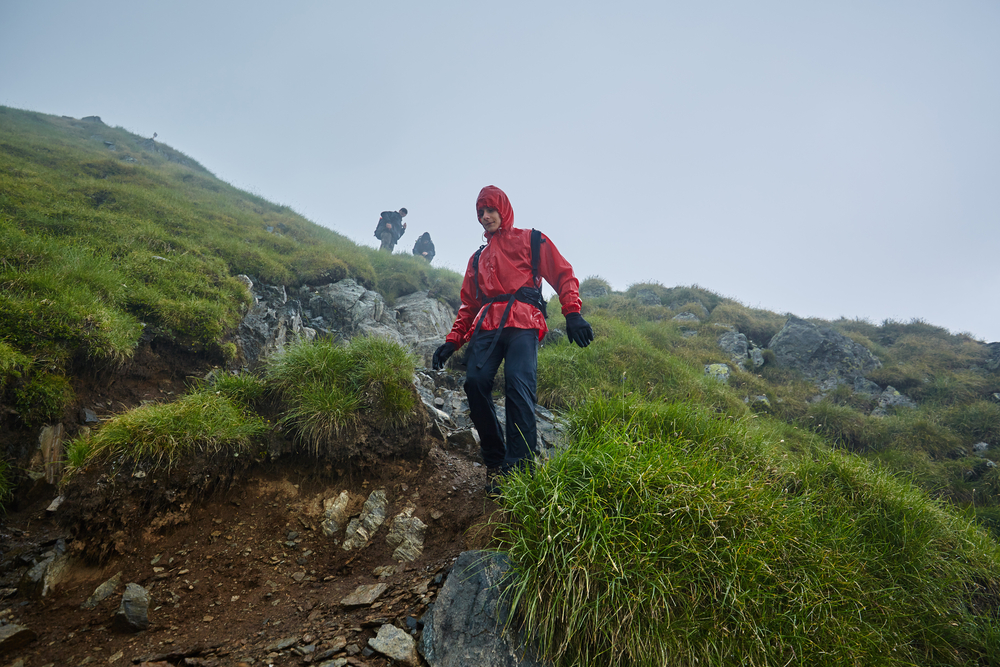




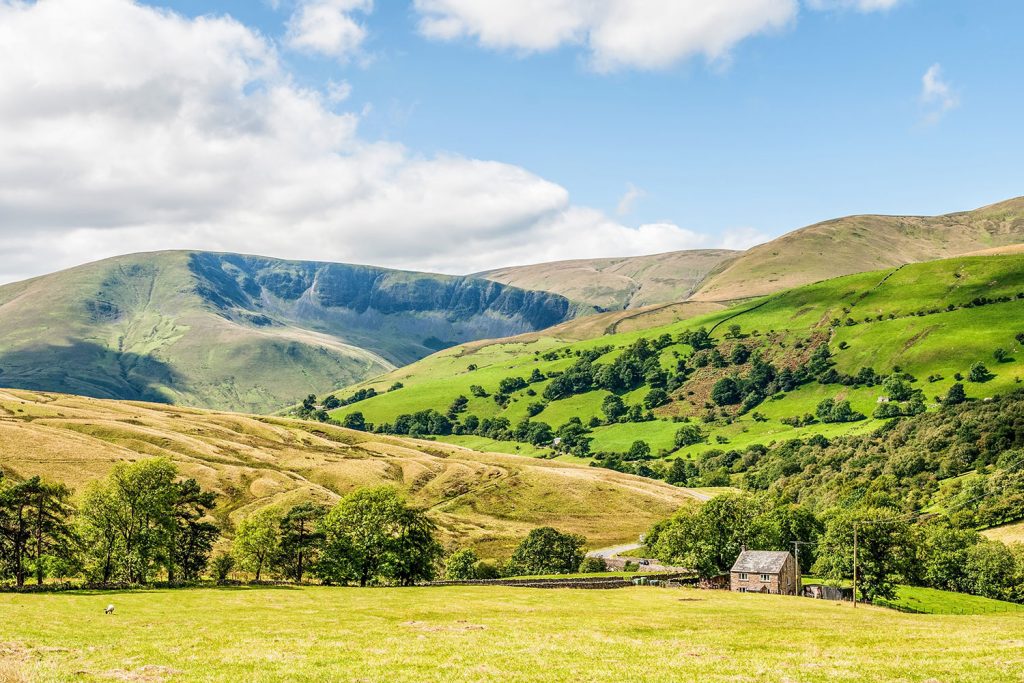























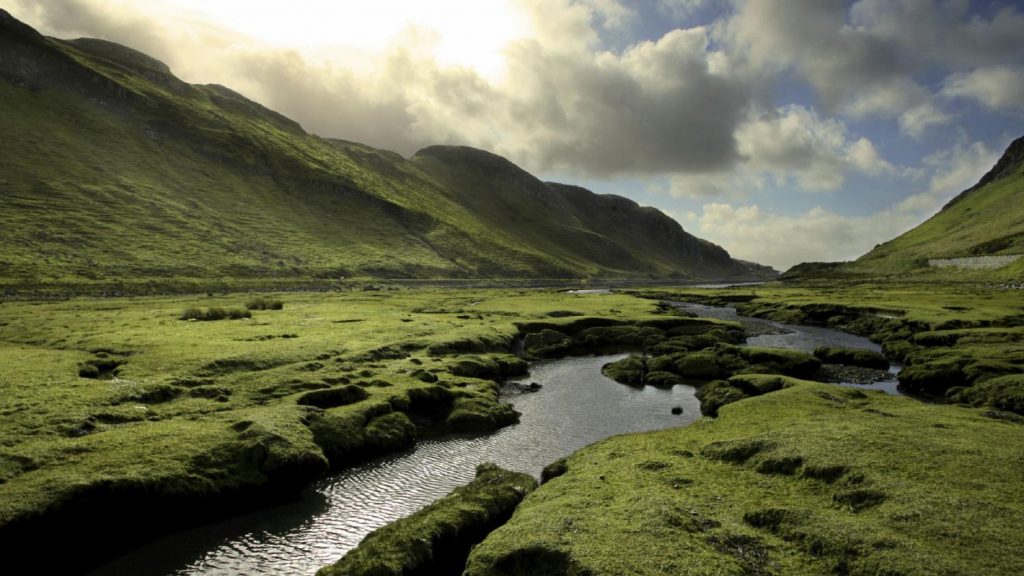
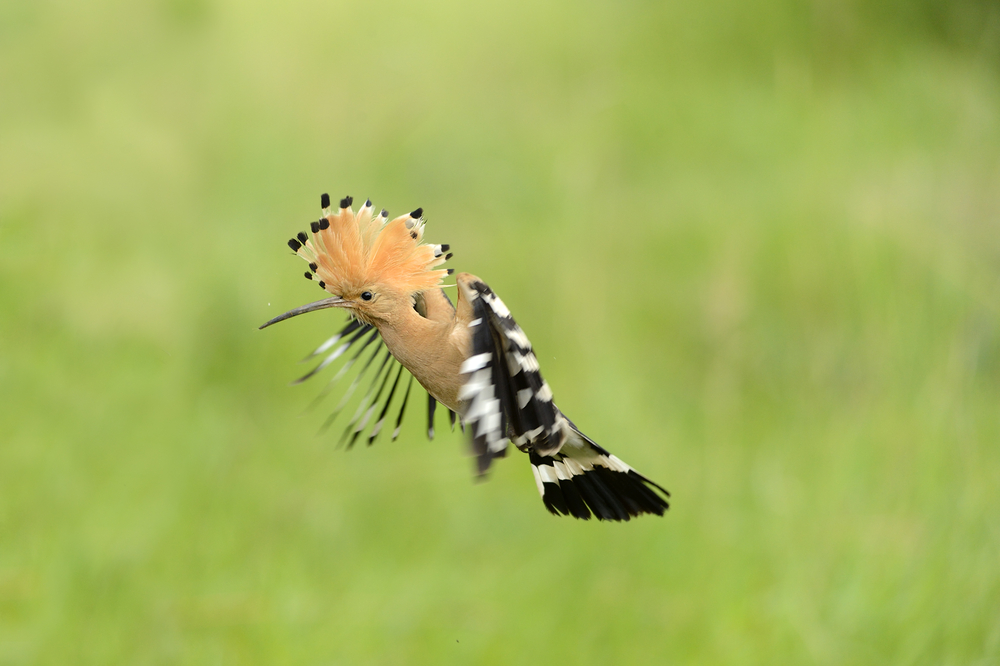












































































































 Australia
Australia New Zealand
New Zealand South Africa
South Africa European Union
European Union